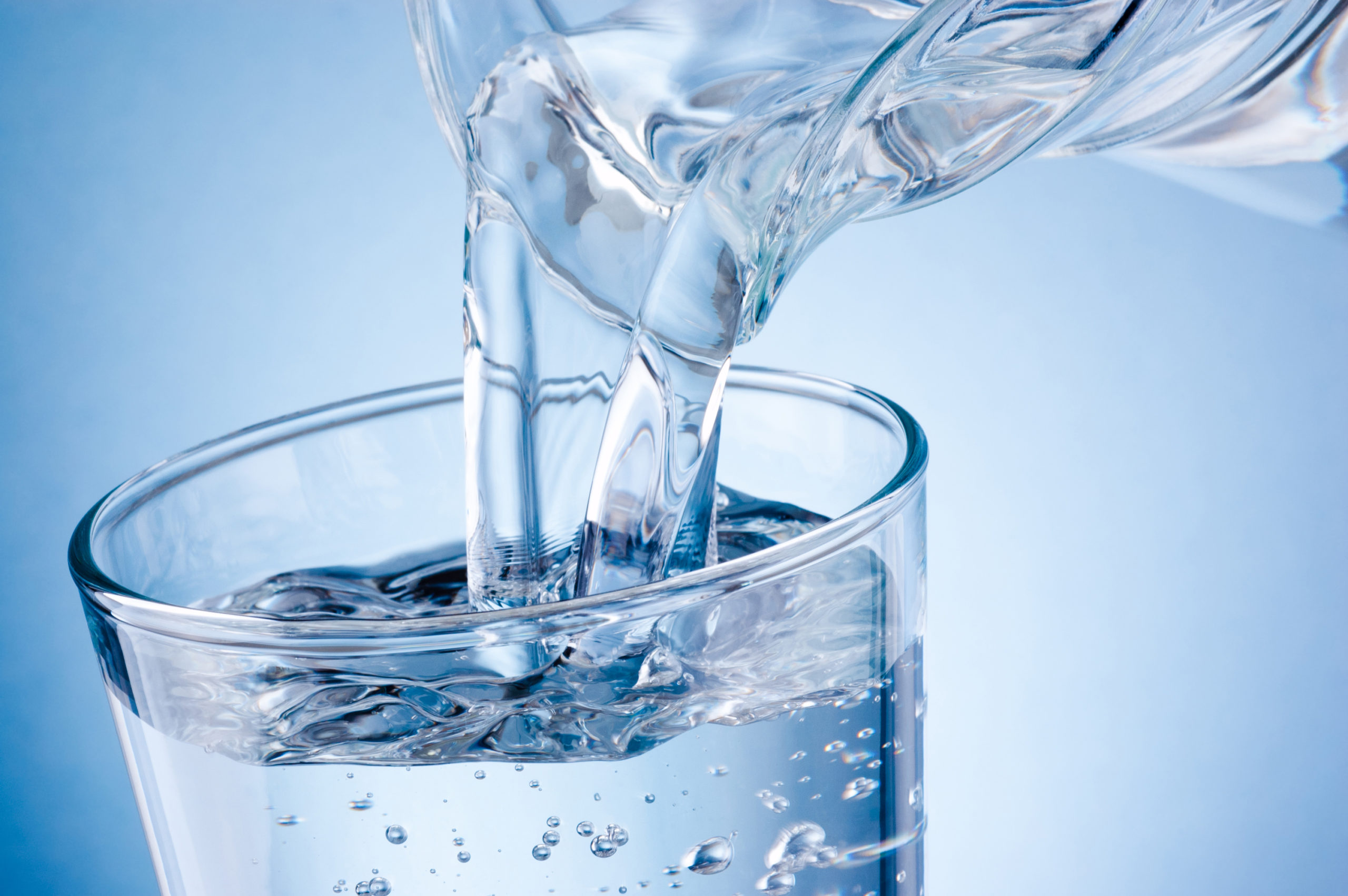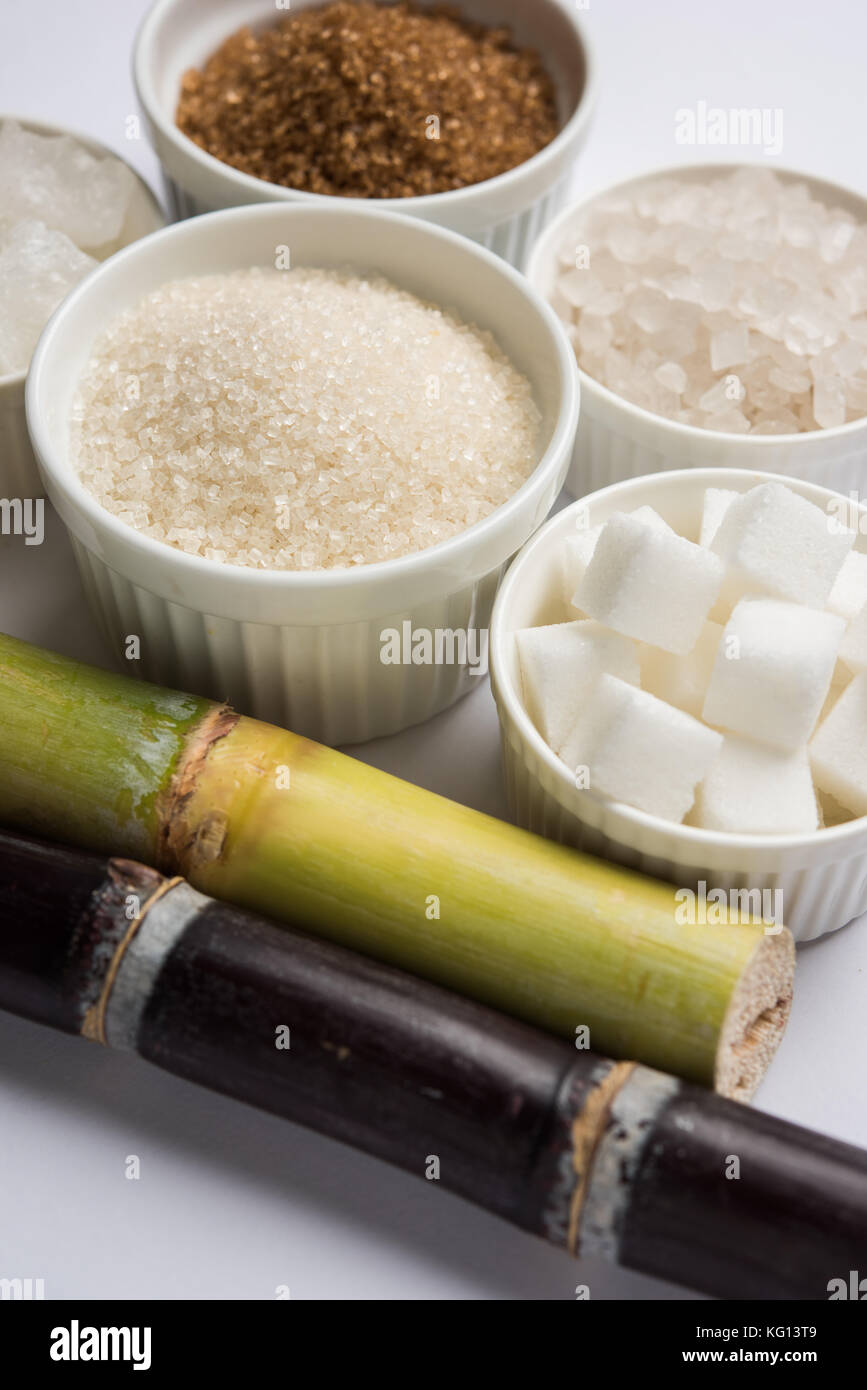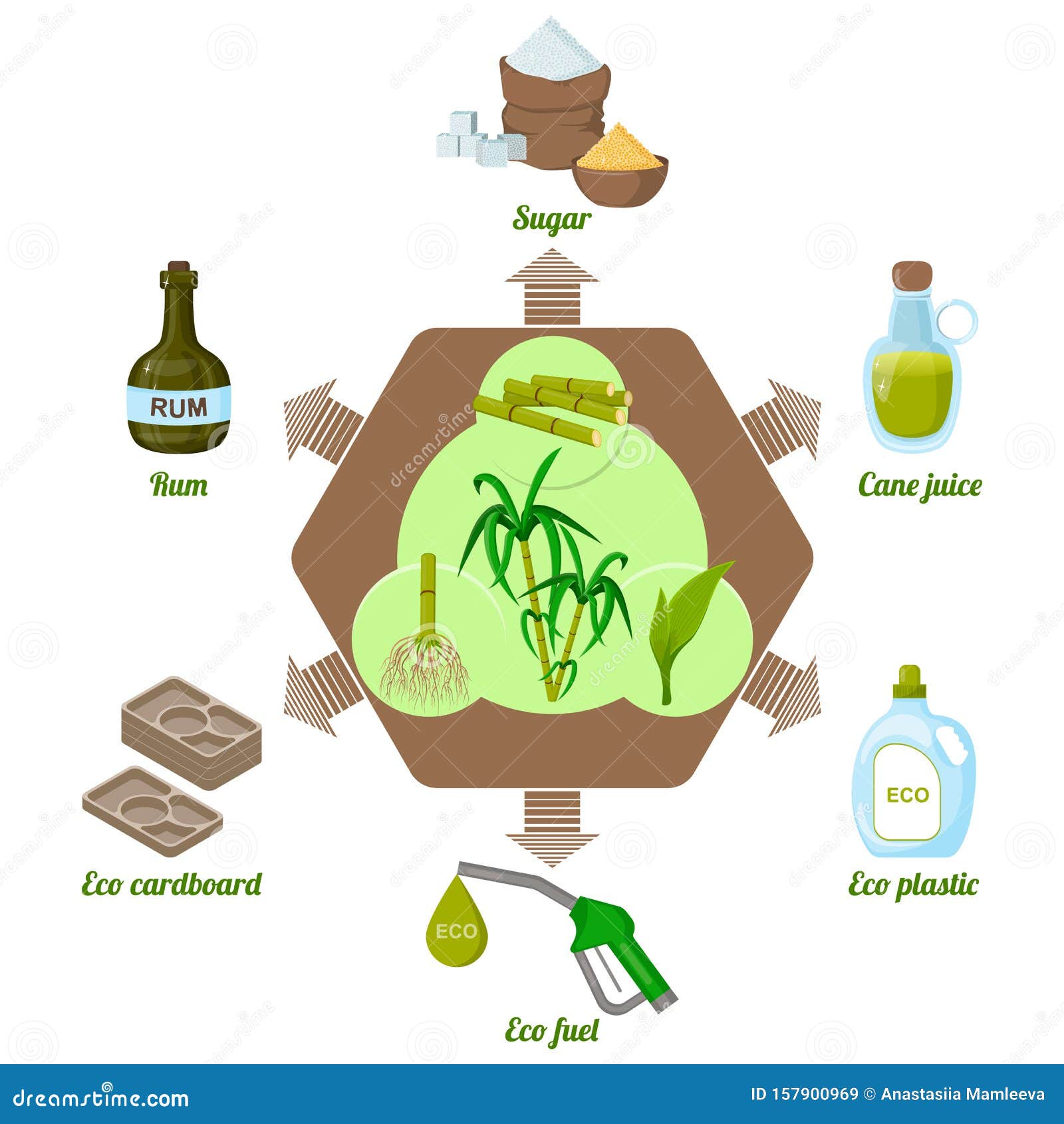Understanding sugar cane products and Their Commercial Impact
Wiki Article
Introducing the Manufacturing Secrets Behind Sugar Cane and Its Diverse Variety Of Products
The manufacturing trip of sugar cane is intricate and multi-faceted. It starts in the fields, where cautious harvesting techniques established the phase for suitable sugar extraction. The procedure involves several phases, including juice extraction and refining - sugar cane products. Nonetheless, sugar cane's prospective expands far beyond plain sweetness. Developments in handling and lasting practices are reshaping its function in contemporary sectors. What lies ahead for this versatile crop? The responses might amaze those interested in its futureThe Journey of Sugar Cane: From Area to Factory

As sugar cane persuades carefully in the exotic wind, it starts a transformative journey from field to factory. The lively environment-friendly stalks, abundant in sucrose, are grown under ideal conditions, taking advantage of adequate sunshine and rains. Farmers thoroughly keep track of the growth, making sure the plants reach their peak maturation, which is crucial for maximizing sugar content.Once matured, the cane is prepared for harvesting, where its fibrous framework holds the guarantee of wonderful products. The journey continues as the stalks are carried to processing facilities, where they undergo a series of thorough steps. At the factory, the cane is cleaned, shredded, and pressed to extract the juice. This juice is then clarified and vaporized, leading the means for crystallization. Each stage of this trip is crucial, as it eventually figures out the high quality of the sugar and other items stemmed from this flexible plant.
Collecting Strategies: The Very First Step in Production
Collecting sugar cane calls for precision and ability, as the timing and method directly influence the top quality of the end product. The process typically starts with determining the excellent harvest, which is crucial; sugar content comes to a head simply before the plant gets to full maturation. Cultivators frequently rely upon experience and farming signs to choose when to harvest.Two major methods control the gathering landscape: guidebook and mechanical techniques. Manual harvesting, though labor-intensive, enables careful option of stalks and reduces damage. Employees use machetes to reduce the cane close to the base, making certain the stalks stay intact for processing.Mechanical harvesting, on the various other hand, utilizes specific tools to cut and accumulate the cane quickly. While this approach greatly boosts efficiency, it might lead to higher degrees of particles and lower sugar material. Inevitably, the chosen method affects not only the amount yet also the high quality of sugar cane supplied to refining facilities.The Extraction Refine: Opening the Sweetness
The extraction procedure is crucial for changing collected sugar cane right into pleasant juice. Various methods of juice extraction can significantly influence the top quality and return of the end product. Comprehending these strategies is necessary for taking full advantage of the advantages of sugar cane manufacturing.Collecting Techniques Discussed
Releasing the sweetness of sugar cane begins with accurate harvesting strategies that ensure optimal yield and high quality. The procedure commonly includes reducing the cane at ground level, making sure marginal damages to the plant and enabling regrowth. Farmers often make use of machetes or specialized equipments, depending on the range of the procedure. Timing is essential; collecting takes place when the sugar material reaches its height, normally throughout completely dry periods. In addition, employees need to be trained to identify the most effective stalks, avoiding those that are also old or infected. Reliable transport to refining centers is additionally crucial, as hold-ups can lead to sugar destruction (sugar cane products). These thorough strategies inevitably lay the structure for creating premium sugar and its diverse by-productsJuice Removal Techniques
Juice extraction is an essential action in changing sugar cane right into its sweet significance. This procedure generally involves numerous techniques, each designed to successfully remove the sweet fluid from the fibrous stalks. One of the most common strategy is milling, where the sugar cane is crushed in between heavy rollers to launch the juice. One more approach is diffusion, which uses warm water to liquify the sugar from the cane fibers, making it a more reliable choice for large operations. In addition, some producers use screw presses, which apply mechanical stress to extract juice. After removal, the juice undergoes information to get rid of contaminations before more processing. Each approach reflects the sector's focus on maximizing yield and guaranteeing premium sugar manufacturing.Refining Sugar: Transforming Raw Cane Into Granulated Gold
The refining procedure is crucial for converting raw cane sugar right into the pure, granulated product consumers identify. sugar cane products. This involves a series of removal and purification steps to remove pollutants, adhered to by condensation and drying out techniques that boost the sugar's top quality. Understanding these techniques exposes the intricate transformation from cane to the golden granules that sweeten plenty of foods and drinksRemoval and Filtration Refine
A vital stage in the sugar manufacturing trip entails the extraction and filtration of juice from newly gathered sugar cane. This procedure starts with squashing the cane to release its sweet juice, usually utilizing huge rollers or mills. The Read Full Article extracted juice includes not only sugar however likewise pollutants, including fibers and mud. To ensure the juice is appropriate for additional refining, it goes through a purification procedure. This entails passing the juice through various filters and clarifiers to remove strong fragments and undesirable products. Chemicals such as lime may be included to aid in the clarification process. The result is a clear, raw cane juice that serves as the structure for generating polished sugar, all set for succeeding phases of processing.
Condensation and Drying Out Methods
After the extraction and filtration procedures generate clear raw cane juice, the following action in sugar production is formation. This process entails boiling the juice to vaporize water, enabling sugar particles to form crystals. As the fluid thickens, it gets to supersaturation, triggering sugar to take shape. The blend is then cooled, advertising additional crystal development. Once formation is complete, the sugar crystals are divided from the remaining syrup through centrifugation.The final stage entails drying, where the crystals are revealed to cozy air to get rid of residual dampness. This step is essential, as it ensures the product achieves the wanted granulation and rack security. The result is pure, granulated sugar, all set for packaging and distribution.Past Sweet Taste: Diverse Products From Sugar Cane
While sugar cane is mainly identified for its wonderful flavor, its adaptability expands far beyond simple sweet taste. This i loved this resistant plant serves as the source for a myriad of products that satisfy varied industries. Ethanol, stemmed from sugar cane fermentation, plays a vital function in renewable power, acting as a cleaner choice to fossil fuels. Additionally, molasses, a by-product of sugar refining, is used in pet feed, along with in cooking and fermentation processes.Sugar cane's coarse deposit, called bagasse, is not wasted; it is transformed into naturally degradable product packaging products and functions as a biomass gas source. Various sugars and syrups acquired from sugar cane discover applications in the food and drink market, contributing to flavor and conservation. The plant's leaves can be used for thatching, while its juice is taken in as a rejuvenating beverage in lots of societies. Subsequently, sugar cane exemplifies agricultural possibility past its sweet reputation.Developments in Sugar Cane Handling
As innovations in modern technology remain to improve different sectors, sugar cane processing is experiencing a significant improvement. Modern developments, consisting of automated harvesting and precision farming, are enhancing effectiveness and return. Drones and sensors keep an eye on plant health and wellness, permitting farmers to optimize watering and nutrient application, ultimately improving productivity.In processing centers, cutting edge equipment and devices streamline procedures. Advancements such as chemical processing and progressed purification methods boost the removal of sugar while lessening waste. Additionally, the adoption of real-time information analytics enables producers to check processes carefully, making certain quality assurance and minimizing downtime.Biotechnology is additionally playing a crucial function; genetic adjustments improve sugar cane's resistance to bugs and environmental stress factors. These advancements not just contribute to higher sugar returns but likewise promote the production of diverse spin-offs from the cane, broadening its commercial applications. Generally, these technologies are leading the way for a much more effective and sustainable sugar cane handling market.The Future of Sugar Cane: Sustainability and Bioproducts
The future of sugar cane manufacturing is significantly linked with sustainability and the growth of bioproducts. As international need for eco-friendly choices climbs, the sugar cane sector is rotating in the direction of methods that lessen environmental influence. Technologies in cultivation techniques, such as precision farming and incorporated parasite monitoring, aim to enhance yield while decreasing resource consumption.Furthermore, sugar cane is being explored as a basic material for biofuels, bioplastics, and other sustainable products. These bioproducts not only provide a sustainable choice to standard fossil gas and plastics however likewise add to a circular economic climate by using waste materials.Research and advancement in biotechnology are leading the way for improved sugar cane varieties that call for much less water and plant foods, even more promoting sustainability. By embracing these advancements, the sugar cane sector can protect its future while addressing essential environmental obstacles, demonstrating its possible as a foundation of sustainable advancement.
Frequently Asked Inquiries
What Are the Environmental Influences of Sugar Cane Farming?
The environmental influences of sugar cane farming include logging, soil destruction, and water air pollution. Additionally, making use of pesticides can damage biodiversity, while monoculture practices minimize ecosystem strength, posing long-term sustainability obstacles for agricultural methods.
Exactly How Does Sugar Cane Compare to Various Other Sugar Nutritionally?
Sugar cane, abundant in carbs, provides energy however lacks essential nutrients compared to alternatives like honey or syrup, which provide nutrients. Its high glycemic index additionally elevates concerns over blood sugar level spikes.What Are the Wellness Perks of Consuming Sugar Cane Products?
The wellness advantages of consuming sugar her explanation cane items consist of boosted food digestion, improved power levels, and prospective antioxidant buildings. In addition, they might sustain hydration and supply important nutrients, contributing positively to general well-being.Just How Is Sugar Cane Waste Utilized After Processing?
After handling, sugar cane waste is used in various ways, consisting of biofuel production, animal feed, and natural fertilizers. This sustainable method decreases ecological effect while maximizing resource performance within the sugar sector.What Are the Historic Origins of Sugar Cane Growing?

Report this wiki page